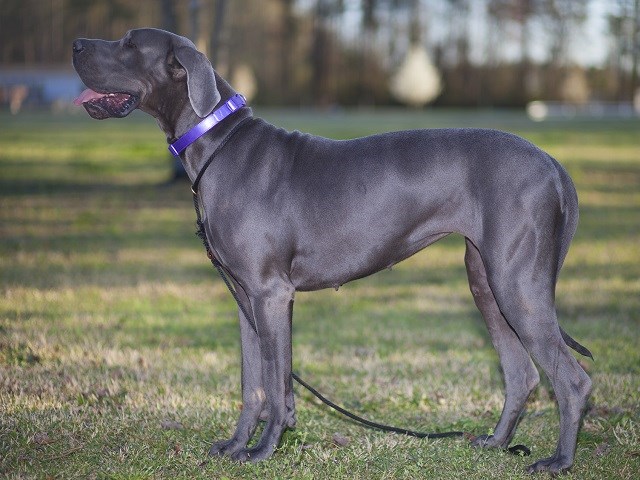Great Dane Breed Information
At a Glance
| Male Height | 30 - 42 inches |
| Female Height | 28 - 40 inches |
| Male Weight | 120 - 200 pounds |
| Female Weight | 110 - 180 pounds |
| Size | Huge |
| Colors | Black, Blue, Fawn, Brindle, Mantle and Harlequin |
| Hypoallergenic | No |
| Personality | Affectionate, Confident, Gentle, Loyal, Playful, |
| Lifespan | 6 - 8 years |
Introduction
The Great Dane originated in Germany and is one of the largest dog breeds. Despite their imposing size these dogs are known to be very gentle and kind, and make great family pets as they seem to get along very well with children.
History
The Great Dane originated as a cross breed mix between the English Mastiff and Irish Wolfhound. The breed was developed in Germany and was used for hunting wild boar. The name 'Great Dane' was adopted because of the poor relationship between the British and the Germans.
Temperament
The Great Dane has a gentle disposition, and is often refereed to as a "gentle giant." it has an affectionate nature and loves been around people. This breed is rarely aggressive and craves attention from its owners.
Coat
The Great Dane sports a short and thick coat. Typical colors are Fawn, Brindle, Black, Blue, Harlequin (white with black torn patches) and Mantle (mainly black with a white collar sometimes extending over the chest and a white muzzle).
Do Great Danes do well in Apartments?
The Great Dane is not recommended for apartment living, but for a dog of this size it can do surprisingly well in such circumstances if exercised properly. Unfortunately you will find that most apartments that do allow dogs usually of weight limits of 20 to 40 pounds, so you will be hard pressed to find accommodation that will take the dog, and if you do find such an apartment take into account that some day you may have to move.
Barking
The Great Dane does not bark much and only becomes aggressive when the circumstances warrant it.
Do Great Danes Get Along With Children & Other Pets?
Great Danes are generally well disposed toward other dogs, other noncanine pets, and familiar humans. They generally do not exhibit extreme aggressiveness or a high prey drive.[43] The Great Dane is a very gentle and loving animal and with the proper care and training is great around children, especially when being raised with them. it is playful and patient with children.
Exercising a Great Dane
Like most dogs, Great Danes require daily walks to maintain their health. However, it is important not to over exercise this breed, particularly when young. Great Dane puppies grow very large, very fast, which puts them at risk of joint and bone problems. Because of a puppy's natural energy, Dane owners often take steps to minimize activity while the dog is still growing.
How to Groom a Great Dane
Great Danes should be brushed at least once a week to remove dead hair during most of the year. You will probably need to increase the brushing frequency during the Spring and Fall.
Great Dane and Shedding
The Great Dane sheds all year long, but has short hair so is a below average shedder. Molting is heaviest in the Spring and Fall.
Great Dane Health Problems?
The Great Dane is the most susceptible breed to bloat - a build up of gas in the stomach. The breed can also occasionally suffer from hip dysplasia and heart problems. Because this breed grows vary quickly to a large size, care must be taken not to over-exercise the dog so that it does not develop joint problems in adulthood.
Are Great Danes Intelligent?
The Great Dane is a dog of average intelligence which means it should be able to understand verbal commands after 25 to 40 repetitions, and obey a first command about 50% of the time.<br>
Great Dane
Training needs to begin while the Great Dane is still a puppy. This should always begin with socialization with people and other dogs. Veteran Great Dane owners prefer to use positive reinforcement methods. The clicker method of training using small food treats and a mechanical 'clicker' to indicate the expected response is popular with this breed.
